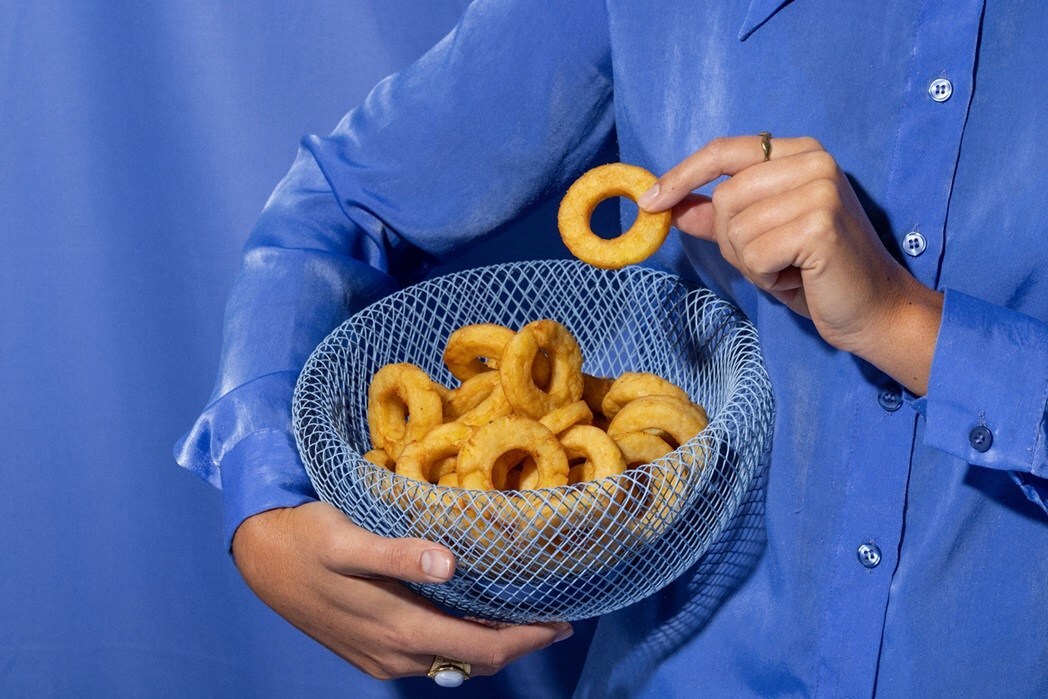
Hotter, drier summers are a reality for many, and this (among other things) may mean you have to start to grow different plants. Drought tolerant climbing vines are a wonderful option if you're seeing less rainfall in your region. As well as providing beauty, color and scent, many vines are great plants for pollinators.
Climbing vines also offer privacy when trained over trellis, fences or pergolas. Alongside other types of drought-tolerant planting ideas , these climbing vines thrive in the sun and require less supplemental watering than many other species. As well as conserving water, they require less maintenance too.

Here, we profile seven expert plant picks that will all bloom and thrive in a hot, arid climate. 'One crucial way to lower water usage in the garden is to reexamine what plants we choose, opting for those that look great but don’t require a lot of water,' says Noelle Johnson , author, The Water Smart Garden, available from Amazon , and Dry Climate Gardening. 'I am constantly amazed at the beauty of low-water plants.
You don’t need to sacrifice beauty for water efficiency - you can have both. 'The first group of plants to look at when selecting plants for your home should be those native to your region. In many cases, they are the most water-efficient choice because they are adapted to growing, flowering, and thriving on natural rainfall amounts where you live, and only need supplemental water during dry periods.
' 'It’s also helpful to think of plants identified by terms such as drought-tolerant as plants that can tolerate less than average rainfall amounts or those that may need minimal supplemental irrigation,' says Noelle. Noelle is a horticulturist, landscape consultant, and garden writer who lives in the Phoenix, Arizona, metro area. Popularly known as the 'AZ Plant Lady,' her passion for over 20 years has been to inspire and teach people to create, grow, and maintain beautiful gardens that thrive in a hot, dry climate.
1. Coral vine (Antigonon leptopus) Native to Mexico, delicate sprays of pink flowers decorate the lush light green foliage of this sun-loving vine through hot summers. As well as coping with the heat, coral vine, or queen's wreath's profusion of pretty blooms make it a good choice if you're looking to grow plants for pollinators.
'While invasive in tropical regions, the queen’s wreath is well-behaved in dry climates,' says Noelle Johnson. 'Plant at the base of vertical surfaces such as walls or fences, providing a trellis for support. Bees and butterflies are frequent visitors to queen’s wreath.
'This fast-growing vine is completely deciduous, so it will lose all its leaves in winter. Prune it back to the ground in spring once the threat of frost is over, and it will grow back quickly.' USDA hardiness zones: 10-11 2.
Cat claw vine (Macfadyena unguis-cati) Originating in Central and South America, this woody, heat-loving vine has yellow trumpet-like flowers and derives its nickname from tendrils on its foliage that resemble a cat's claw. It is an excellent climbing plant for growing along vertical walls or fences that experience the full sun and reflected heat, according to Noelle Johnson. However, it may be considered invasive in some regions, so plant it with care.
'Cat Claw is one of the few vines that can tolerate west-facing exposures against a wall,' says Noelle. 'Beautiful, yellow flowers appear in spring, followed by a long skinny seedpod. While cat claw vine is an excellent choice for full sun areas, care must be taken as it is very vigorous and can quickly overtake nearby plants and structures.
'No trellis is required. In spring, prune away frost-damaged growth and then focus pruning efforts to keep it restrained. You can prune it back to the ground every few years to check its spread.
' These heavy duty pruners from Burpee have carbon steel blades that ensure a clean cut through stems and branches. USDA hardiness zones: 9-12 3. Crossvine (Bignonia capreolata) Another woody, heat-loving climber with trumpet-like blooms is the crossvine.
Great for drought-tolerant planting ideas , this perennial creeper originates from the southeastern US and can cover walls without the need for support, unless you want to train it in a particular direction. 'The lush green foliage of this vine adds a lovely, vertical backdrop to dry climate gardens,' says Noelle. 'Red, tubular flowers appear in spring that attract hummingbirds .
'"Tangerine Beauty" is a popular variety with orange/pink blooms. 'Crossvine is an excellent alternative choice as it isn’t as invasive and is easier to control than some other vines. Use it to cover a bare wall, fence, or chain-link fence.
Be sure to allow enough room for it to grow and keep other plants out of reach of its tendrils. 'Provide support such as a trellis to help train it up and outward. Like most vines, crossvine needs a couple of years before it begins to grow.
Prune as necessary to control its growth and fertilize in spring. Light pruning can be done in summer.' USDA hardiness zones: 5-9 4.
Lady Banks' Rose (Rosa Banksiae) This rambling rose likes a sunny spot in a sheltered location and well draining soil. It's possible to train a climbing rose and this one can grow to over seven yards high and will reward you with white or pale yellow blooms. 'This rose climber is a great low-maintenance choice for dry climate gardeners,' says Noelle.
'The glossy green leaves are narrower than traditional roses, and the stems are thornless. Lady Banks’ blooms once a year in spring when its branches are covered with fragrant white or yellow roses, depending on the variety. 'This versatile rose can be trained upright on a trellis as a vine or grown as a large shrub with arching stems.
While it can take a few years for Lady Banks’ to fill out, it is well worth the wait. 'Prune it yearly, once the blooming has ended, in mid to late spring. Focus pruning efforts to promote upright and outward growth while cutting back any wayward branches.
Don’t prune later in the year, or there will be far fewer roses the following year.' USDA hardiness zones: 6-11 (deciduous in 6-8, evergreen in 9-11) 5. Bougainvillea (Bougainvillea spp) This vibrant climber is a favorite for many, frequently covering garden walls in hot spots around the globe.
Its colorful blooms range from bold pinks, deep purples and rich reds to zingy oranges, yellows and more. This is a must-have plant when it comes to Mediterranean garden ideas . 'Bougainvillea is a showstopper, flaunting vibrant bracts in various colors that brighten any landscape,' says Maureen Wright , plant expert, Fast-Growing Trees.
'Its deep roots and thick, waxy leaves are perfectly designed to withstand dry spells, making it a “go to” for drought tolerance. Bougainvillea basks in full sun and loves well-drained soils, flourishing in warm, sunny spots. 'This vigorous climber needs strong support, like a trellis or sturdy fence, to show off its stunning display.
Water sparingly, only every 2-3 weeks during dry periods. Overwatering can effect the vibrancy of blooms. Light pruning after blooming encourages more color.
Although, handle it with care, due to its sharp thorns.' Wearing gardening gloves, like these leather gardening gloves from Walmart will protect your hands from scratches. USDA hardiness zones: 9-11 (though it can be grown in containers and brought indoors in cooler zones).
Maureen has been a Certified Oklahoma State University Master Gardener since 2012 and is currently working on her ISA Arborist Certification. Her background in social work led her to an interest in horticultural therapy training and she spends a lot of her time working with at-risk youth and adults working on community garden projects. 6.
Honeysuckle (Lonicera spp.) Easy to grow, with twining stems, trumpet-like blooms and a sweet scent, Honeysuckle is among the most-loved flowering climbers , particularly if you like a cottage-garden look. It's another great plant for pollinators too.
'Honeysuckle is a beloved, fragrant vine known for its tubular flowers that attract pollinators like bees and hummingbirds,' says Maureen Wright. 'This vine thrives in dry conditions, thanks to its adaptable root system that digs deep for moisture and semi-evergreen foliage that conserves water. 'Honeysuckle is versatile, thriving in full sun to partial shade, making it a great addition to various garden spots.
Provide it with a trellis, fence, or arbor to twine around, as it loves to climb. 'Once it's established, water your Honeysuckle deeply every 2-3 weeks, letting nature take care of the rest. Regular pruning after it has flowered helps keep it tidy and blooming.
However, be mindful of potential invasiveness in some species.' USDA hardiness zones: 4-9 (depending on the species). 7.
Wisteria (Wisteria spp.) This beautiful vine is as popular for pergola ideas , as it is draped over property facades and garden walls, with it's spectacular display of flower clusters. It's a fast-growing vine that loves full sun too, although it can take three to five years to flower.
'Wisteria is a vine that really adds charm to any garden space,' says Maureen Wright. 'With its cascading clusters of fragrant, lilac-colored flowers, it creates a stunning spring display. 'This is another resilient vine, with a robust root system that helps it weather dry spells.
Wisteria thrives in full sun, though it can tolerate partial shade. It adapts well to different soil types, as long as they drain well. 'Wisteria demands strong, durable support, such as pergolas, arbors, or heavy-duty trellises, since it grows large and heavy over time.
Once it's established, Wisteria needs deep watering only every 2-3 weeks during dry spells, and will thrive even when water is scarce. 'Prune it regularly to control its vigorous growth and encourage blooming. Some species can be invasive, so choose wisely.
' US hardiness zones: 4-9 (with some variation depending on the species). Drought-tolerant doesn’t mean the plant will be fine without any additional water, no matter the level of drought conditions. 'Your best strategy is to look to local watering guidelines, monitor your plants, and provide water to them if they show signs of drought stress,' says Noelle Johnson.
Of course if a plant requires water, it doesn't have to come from a faucet. Most plants fair better with rain water, so consider a rain saver, like this 50 gallon rain barrel available from Burpee , if you don't already have one..














